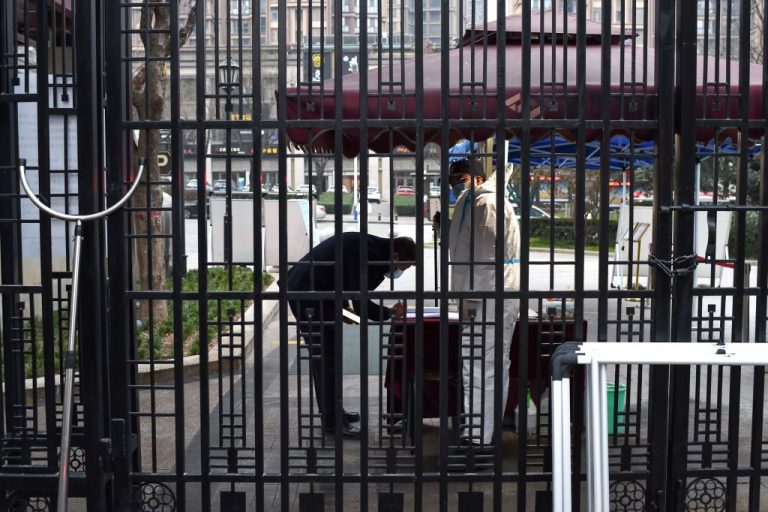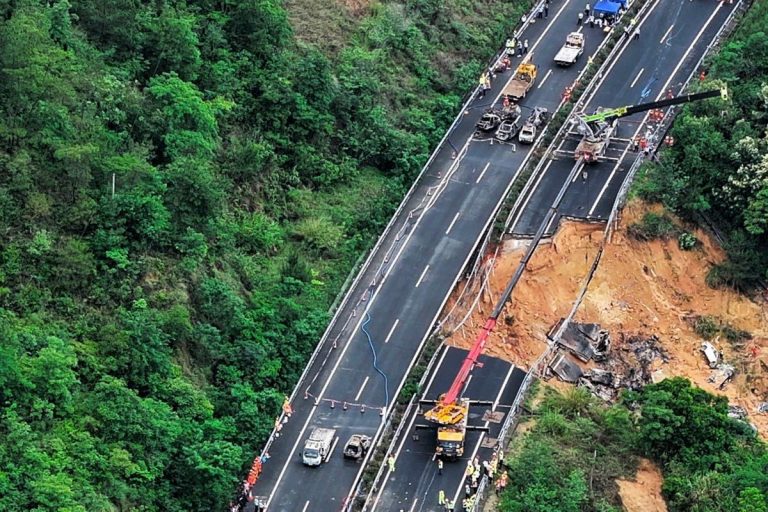After a handful of COVID-19 cases were detected in China’s northwestern city of Xi’an, the Chinese government announced on Dec. 26 that rural migrant workers across the surrounding Shaanxi Province would not be allowed to leave Xi’an during the Chinese New Year holidays coming up next month.
About 300 million migrant workers making a living in China’s cities travel back to their hometowns each year — for many, the break is the only opportunity they have to return home and see their families.
This year’s Lunar New Year falls on Feb. 1, 2022 and is traditionally a grand celebration that sees relatives travel far and wide to rejoin family members in their hometowns. The joyous feasts are coupled with scrumptious home cooked meals and exchanging of hong bao – red envelopes filled with money symbolizing good fortune and prosperity in the new year.
The new restrictions are part of a growing atmosphere of panic surrounding a new wave of COVID-19 cases in Xi’an, a city that is the capital of Shaanxi and home to more than 7 million people. The Chinese Communist Party (CCP) has insisted that only a handful of cases have been detected and those individuals have been quarantined and treated.
Thousands forced into mass quarantine
A resident in Xi’an described the situation in a Twitter post on Dec. 22: “about 90 communities in the city of Xi’an will be locked down tomorrow: Dec. 23. Residents will be required to stay in their homes and will not be allowed to leave the city by train without official documents authorizing them to travel. In addition, only one designated person per household will be allowed to leave the house every two days to buy groceries and supplies for the family.”
Success
You are now signed up for our newsletter
Success
Check your email to complete sign up
Because of doubts over the authenticity of official data released by the CCP, residents have begun speculating that the real reason for Xi’an’s city-wide lockdown could be due to an outbreak of “hemorrhagic fever“.
Another resident’s Twitter post read, “Xi’an, a city with a 95 percent vaccination rate, is about to be locked down. It may not be due to COVID-19, but a vaccine-induced hemorrhagic fever.”
As of mid-December, hundreds of thousands of residents were put in various forms of quarantine under China’s strict zero-COVID policies, halting business operations, cutting flights and cancelling events in the country’s southeastern province of Zhejiang.
READ MORE:
90 Communities Locked Down in Xi’an, China After COVID-19 Spike; Grocery Shopping Allowed Once Every 2 Days
China Fights New COVID-19 Waves in Zhejiang and Xi’an, Quarantining Thousands
Travel restrictions imposed despite ‘largely stable’ situation
While National Health Commission officer Wu Liangyou said the pandemic was developing at a “relatively rapid” speed in the three cities of Ningbo, Shaoxing and Hangzhou, “the situation nationwide was largely stable,” Wu said.
Still, Shaanxi’s vice-head of agriculture Zhang Ying’an said: “If out-of-town workers and students return home for the two holidays, there exist the potential risks of epidemic spread in rural areas, and our current focus is to prevent such spillovers,” explaining the need for enhanced travel restrictions.
Various experts in Xi’an and Beijing told state-media Global Times that this particular outbreak has a “complex” and “unclear” chain of transmission, making its origins difficult to pinpoint. Health authorities also reported that some of the new cases may derive from the new Delta strain, “sub-lineage AY.4,” and related mutations.
At 6:00 p.m. local time, personnel in full protective gear were seen spraying Xi’an’s streets, inside subway systems and government buildings with unidentified chemicals. Trucks also rolled down residential areas blasting out a thick fog of disinfecting chemicals.
According to the National Health Commission, as many as 47 – or nearly 80 percent – of China’s 59 locally infected cases reported on Dec. 15 were related to the outbreak in Zhejiang province. The northern region of Inner Mongolia, which has been battling an outbreak for weeks, accounted for 10 cases.
Zhejiang Province has seen one of the strictest lockdowns since the cases were identified and businesses have been forced to shut down. A key manufacturing hub, Zhejiang accounts for 6 percent of China’s economy.
‘Zero-COVID’ policies
Although the pandemic has claimed millions of lives worldwide and caused catastrophic economic losses for some countries, Chinese authorities claim slightly over 101,000 infections and less than 5,000 deaths nationwide — hailing its “zero COVID” policies as instrumental.
Despite this claim, there has been doubt cast over the veracity of these figures as well as the effectiveness of Beijing’s heavy-handed lockdown policies. These policies have included disinfection theatrics, draconian lockdowns, mass testing and travel restrictions to sustain China’s illusion of curbing the pandemic’s spread.
The CCP’s propaganda apparatus has also insisted that people should instead take notice of the “raging Omicron variant overseas,” especially in the U.S. Chinese authorities have repeatedly said that “timely and precise measures, experience in quelling local outbreaks and high vaccination rate among the Chinese population” are sufficient in ensuring the upcoming Winter Olympics in Beijing will be held safely.














